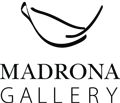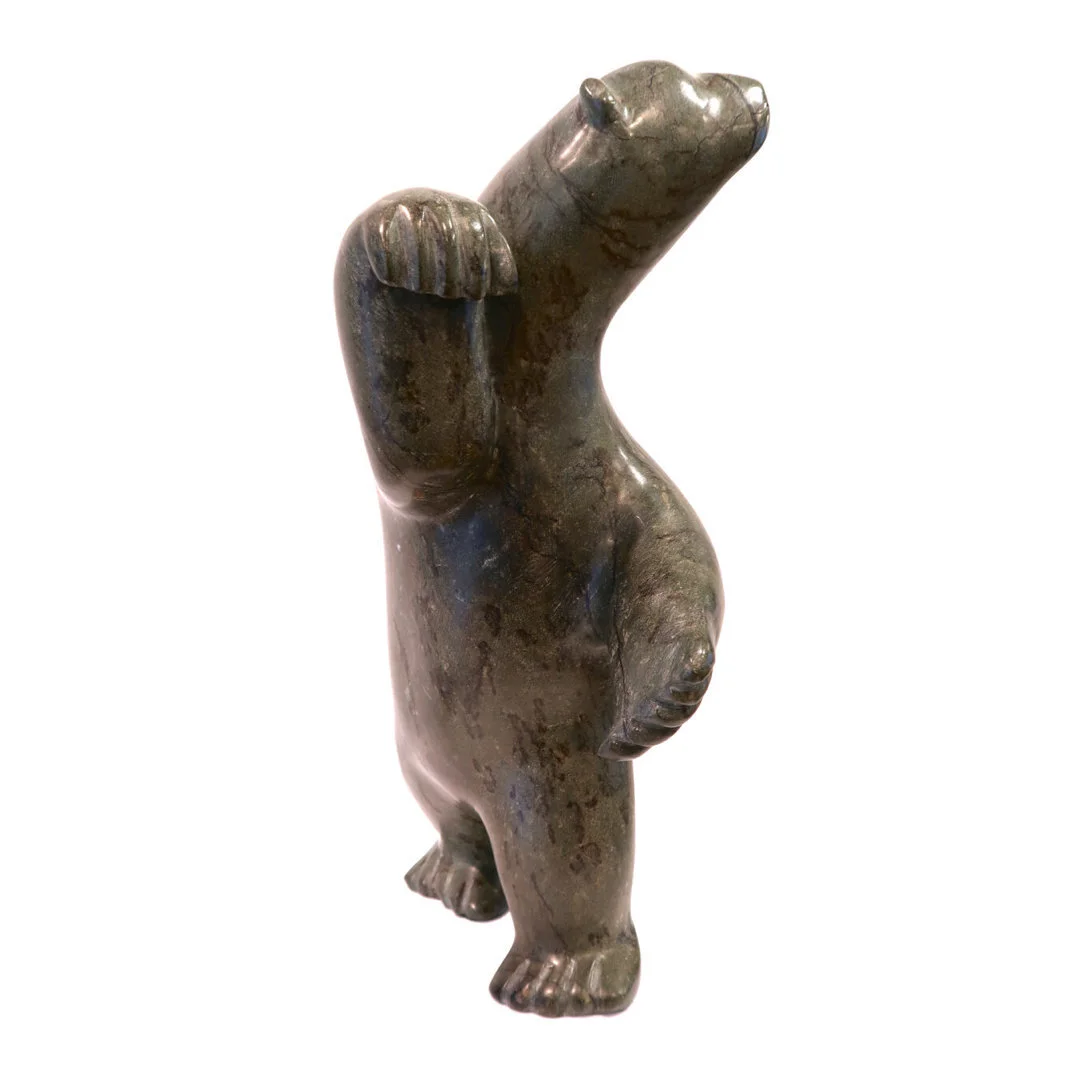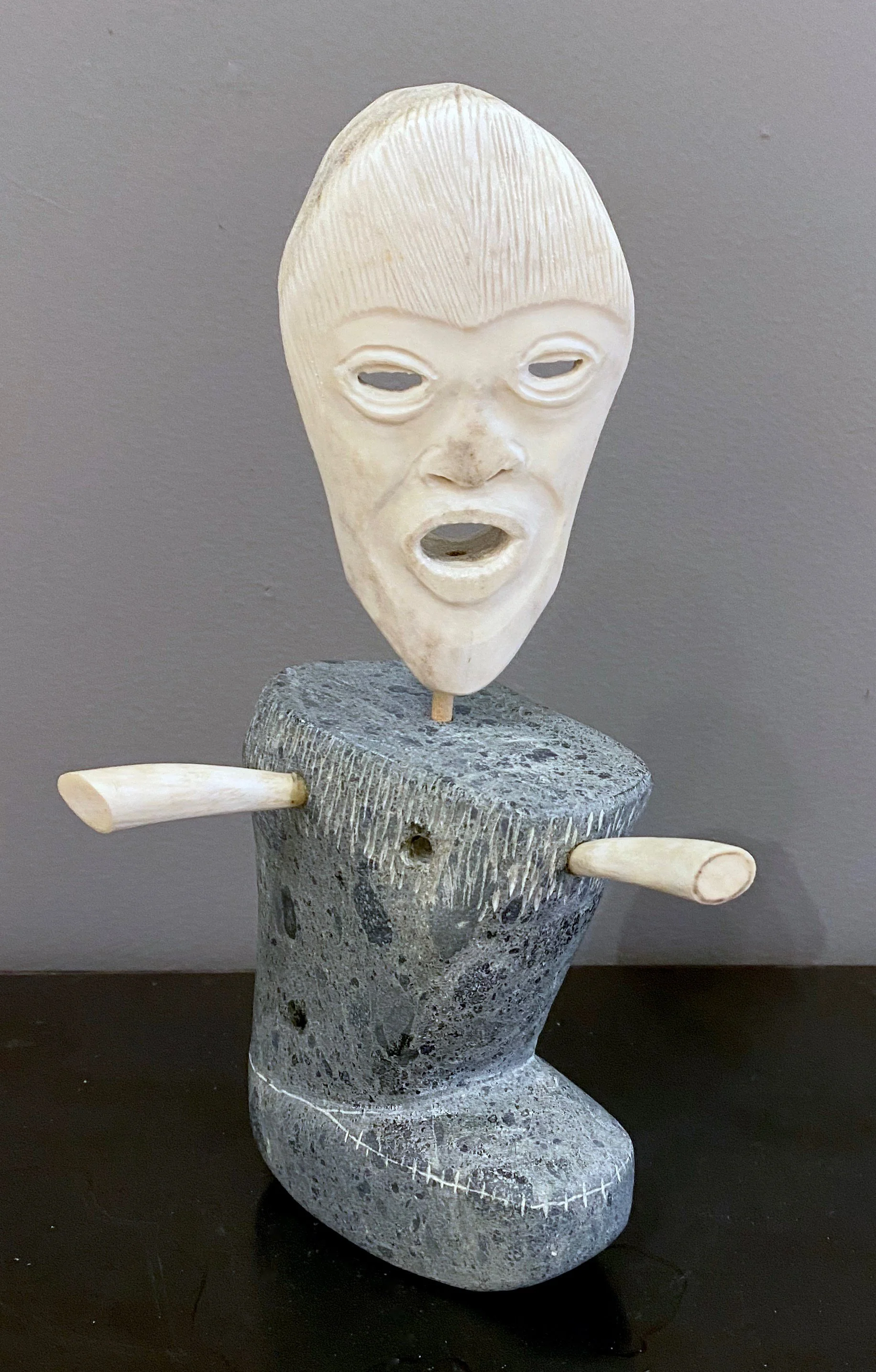Johnny Inukpuk
/B. 1911 - 2007
Inoucdjouac, Québec
Johnny Inukpuk began carving in the early 1950's and his sculptures reflected both the austere and loving realities of life.
His work received recognition as part of an exhibition of Inuit art known as The Coronation Exhibition held at Gimpel Fils in London, England in 1953.
In 1978, Inukpuk was made a member of the Royal Canadian Academy of Fine Arts. A prolific artist, he was still carving well into his later years.
Read MoreOsuitok Ipeelee
/B. 1922 - 2005
Neeouleeutalik Camp, NT
Osuitok Ipeelee was an artist originally from the Neeouleeutalik Camp. He first learned to carve by watching his father Ohotok and then by experimenting in his teens with carving wood and other found materials. Ipeelee moved to Kinngait (Cape Dorset), NU, where he became instrumental in the print and carving programs in the community, creating depictions of Arctic animals as well as humans engaged in traditional activities. Caribou were among his preferred subject matter, crafting their elegant bodies from stone and antler, such as his work Standing Caribou (1985). In 1955, along with Peter Pitseolak, Ipeelee directed a team of craftsmen to carve the official mace for the Council of the Northwest Territories. In 1959, he was also commissioned to create a sculpture of Queen Elizabeth II, which was presented to her upon her visit to Canada that same year.
Read MoreMattiusi Iyaituk
/Mattiusi Iyaituk is internationally recognized for his unique contemporary approach to carving. Often using multiple materials such as stone, ivory, bone and hair, his carvings are rooted in traditional motifs but expressed through a contemporary lens.
His works are found in many important public collections including the National Gallery of Canada, Art Gallery of Ontario and the Winnipeg Art Gallery.
Read MoreTimothy Pee
/Timothy (Tim) Pee has been creating art since he was 15 years old and learned to carve from his family members, which include artists Kananginak Pootoogook, Johnny Pootoogook, and Ashevak Adla. His subject matter of choice to carve is the polar bear. These sculptures have gained Pee significant recognition in recent years and have helped establish him as one of the most skilled carvers on Baffin Island.
Read MorePavinak Petalaussie
/B. 1961
Pavinaq’s father, the late Aggeak Petaulassie (1983), was also a carver. His mother, Timangiak, and brothers Qatsiya and Etidlui are artists in Cape Dorset.
“My father used to tell me about carving…I like carving in stone because it is easier to work with.” Pavinaq began carving in the early 1970’s and prefers groupings of birds or walrus, “They are beautiful animals, that’s why.” From an interview with the Inuit Art Section, November, 1994.
Since 1984 the artist’s work has been shown in Vancouver, Toronto, Banff, and San Francisco.
Read MoreUriash Puqiqnak
/Uriash Puqiqnak is a world-renown carver. His pieces have helped define the iconic Gjoa Haven style which is known for its playful characters carved out of dark soapstone.
Palaya Qiatsuq
/B. 1965
Cape Dorset
Palaya learned how to carve the traditional way - by watching his father. He carved his first two pieces at the age of 12, a bird and a bear. For the past 20 years Palaya has been carving and keeping traditioal stories alive through his work. Stories of transformation and shmanism from his childhood are among Palaya's favourite themes.
Although Palaya views himself as an artist above all else, he is also a "traditionalist with a mission."
"I also see my mission as edicating and teaching others about my culture. Any opportunity I have to travel and give demonstrations and workshops helps contribute to others' apreciation of our art forms." - Palaya Qiatsuq
Read MoreDavid Ruben
/David Ruben
b. 1950
David Ruben is a carver and printmaker from Paulatuk, North West Territories. Rubens was made a member of the Sculptor’s Society of Canada in 2000.
Read MoreMeekeeseetee Saila
/Cape Dorset
1939 - 2008
Meekeeseetee is the son of the famous Cape Dorset sculptor Pauta Saila.
Meekeeseetee has been exhibiting for more than 35 years and his work is held in collections accross North America. He is known for his graceful minimalist representations of wildlife, particularly loons.
Read MorePauta Saila
/Kinngait, NU
1916 - 2009
An innovative carver known especially for developing the dancing bear sculptures, Pauta Saila remains one of the most recognized Inuit carvers to date. Born in Kilaparutua camp on Baffin Island in 1916, Saila learned by watching his father to live on the land as well as how to carve. He remained a hunter throughout his life, and focused his artistic endeavours solely to carving in 1981. Saila also drew images of arctic wildlife and his work was featured in the Cape Dorset Annual Print Collection from 1962-1981. He was elected to the Royal Academy of Arts in 2003.
Read MoreEtulu Salomonie
/B. 1970. Cape Dorset
Etulu Salomonie began his artistic career in 1995. He is influenced by the work of Kellypalik Etidloie and learned to carve sculptures out of local stones from his grandfather.
Read MoreToonoo Sharky RCA
/Toonoo’s parents, Josephee Sharky and Ragee Killiktee, were both carvers, though he credits his grandfather Kuppapik Ragee and his uncle Shorty Killiktee as influences. Toonoo started carving at age ten, began to get serious at thirteen and first exhibited when he was just seventeen. He is regarded as one of the most exciting young carvers to emerge in the Arctic. His themes include dramatic treatments of wildlife, particularly birds, and transformational works that are both powerful and humorous. Recent sculptures feature inlays of different coloured stone and ivory for eyes and other details.
Read More



























